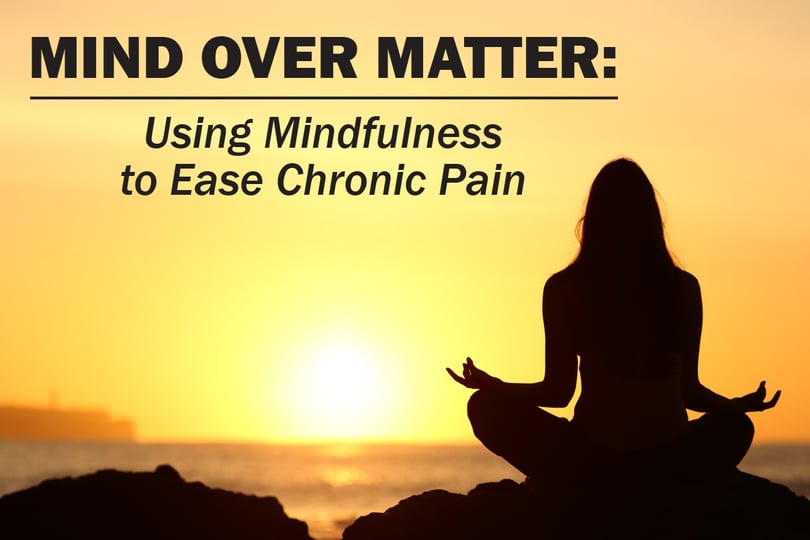Mind Over Matter: Using Mindfulness to Ease Chronic Pain

This blog was updated on June 4, 2020.
Today over 100 million Americans are said to suffer from chronic pain. As regulations on opioids tighten, many are searching for new and improved ways to manage their chronic pain. A number of people have found relief in holistic methods, such as mindfulness and meditation. A recent study by the National Institutes of Health used brain imaging to show the ability of mindfulness meditation techniques to mitigate pain without medication, which may be of value to a variety of injured workers and workers' compensation patients.
So what is mindfulness and meditation? Both are therapeutic techniques that help us become fully present and center the mind. Meditation is the practice of moving past emotions to a calm, present state of mind and spiritual growth. Mindfulness refers to being focused on the moment we are in. They are often used together to improve healthy living, reduce stress, as well as improve our overall sense of positivity and control of our lives.
Forms of meditation or mindfulness include guided imagery, yoga, deep breathing, “3-2-1” technique, and body scans - just to name a few. Even music and playing a game on your tablet can be used as a mindfulness tactic. Most activities do not require any physical activity beyond deep breathing, making the techniques great for people of any age and physical ability.
Being in chronic pain can make even the most positive person gloomy and overwhelmed. Mindfulness and meditation can help encourage positivity. These activities have also been shown to help insomnia, reduce depression and anxiety, and increase a general sense of well-being. There are many types of meditation and mindfulness techniques to choose from. Anyone with a smartphone, tablet, or computer can access many different websites, such as YouTube and the American Chronic Pain Association for free tutorials and guides to get started.
The famed theoretical physicist, Stephen Hawking, once said, “My advice to other disabled people would be, concentrate on things your disability doesn’t prevent you doing well, and don’t regret the things it interferes with. Don’t be disabled in spirit as well as physically.” Mindfulness and meditation can put the person living with chronic pain back in the driver’s seat of their life.
It may take some trial and error to find just the right fit, but with so many options there is something for everyone. Find more resources on mediation and mindfulness on sites like mindful.org and Headspace.com.
Other Posts You Might Be Interested In
Subscribe to email updates
Stay up-to-date on what's happening at this blog and get additional content about the benefits of subscribing.


